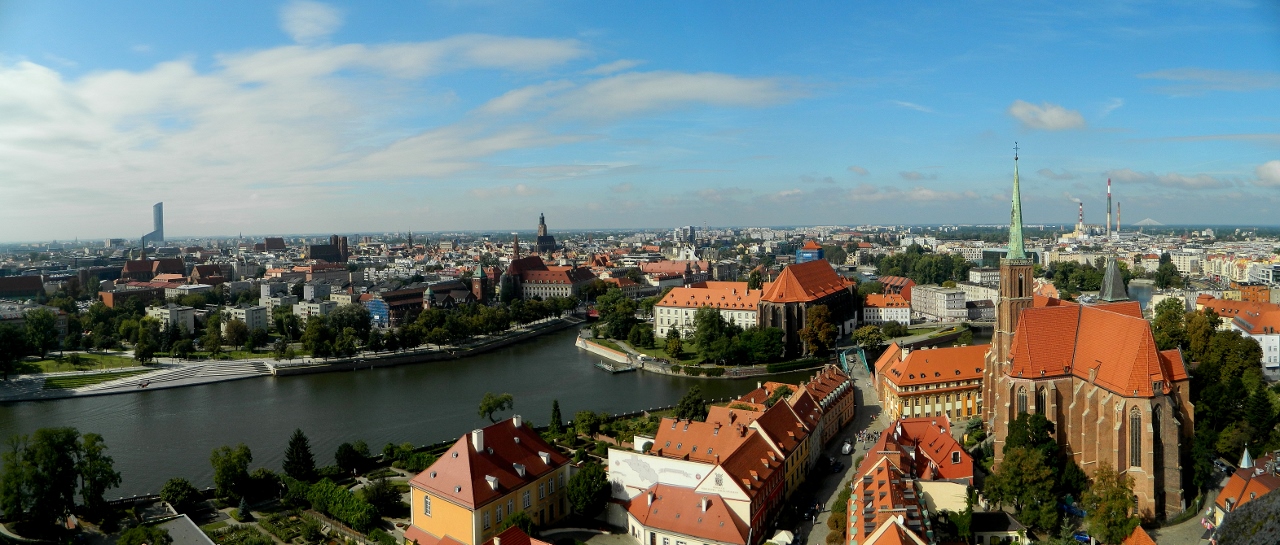Wrocław is one of those Polish cities which has passed backwards and forwards between the hands of countries and empires; Poland, Bohemia, Hapsburg, Prussia, Germany and finally back to Poland in 1945.
Like most of the main urban areas it was originally built on an ecclesiastical centre, endowed by the early Polish Kings and subsequently rose on the back of successful trading in the Middle Ages, when its wealthy patricians imported Renaissance architects to adorn their fabulous buildings in the Old Square.

The Town Hall’s various architectural styles attest to this. Later fashions favoured the Baroque, so adornments of fountains, cherubs and grand frescoes were diligently added.
A ‘blip’ in taste saw the monstrosity of a then uber-modern tower block built as the winner of a 1929 design competition. Remarkably it survived the bombings of the Second World War unlike many of the surrounding centre’s historical gems.

Before the war it belonged to Germany and was known by the name of Breslau. After 1945, when borders moved west from the east, German inhabitants fled and a Polish community from L’viv (now in the Ukraine) moved into the empty homes.
The name returned to Wrocław, which is difficult for English speakers to pronounce as it sounds something like “Vrotts-Woff”. We tried our best.
In the 1670s the Jesuits developed an outstanding university along the banks of the River Oder, across from its Cathedral and diocesan centre. We meandered around the splendid Baroque quarter of various departments, psychology, medicine, sociology and archaeology.
An enormous brick-built library with a charming garden laid out in box hedging and with statues of the heroes of academia was a sophisticated setting for a crowd that mixed laid-back students with busy tourists groups, Asian interestingly.
Tucking into lunch at the extremely cheap refectory we were amused to see our meal, although colourful to look at, was mainly potatoes. Croquettes, fries, roast and mashed spuds were livened up with some red cabbage coleslaw and a pesto sauce with fresh raspberries. An interesting and filling meal!
Happily, a lift whizzed up the 12 flights of spiral staircases to the Cathedral’s tower. The views across the ecclesiastical centre, on an island, back to the old town and beyond were impressive.

The city is vast when compared to the smaller municipal city of Poznań, and smaller towns like Toruń . It was hard to get a sense of where the heart of Wrocław beats as it seemed inevitable that there were many different districts, impossible to locate and savour in just one day’s visit.
We contented ourselves with window shopping in the main streets, including an M&S, and people watching. It seemed quiet as compared to say, London’s Oxford Street on any given day.
On the tram back to the suburb where we were camping we got talking to a local chap keen to use his excellent English. He told us a little of his fears for Poland now that the elected government seems to want to ‘take us back from the big strides we have made in the last eight years’.
He is uncertain of the future and interested in Britain as an alternative, although in the same breath critical of the levels of immigration into Poland from Syrian and Afghan communities. It was an interesting slice of conversation to end the day.

Here’s a gallery of our brief visit to Wrocław:


















